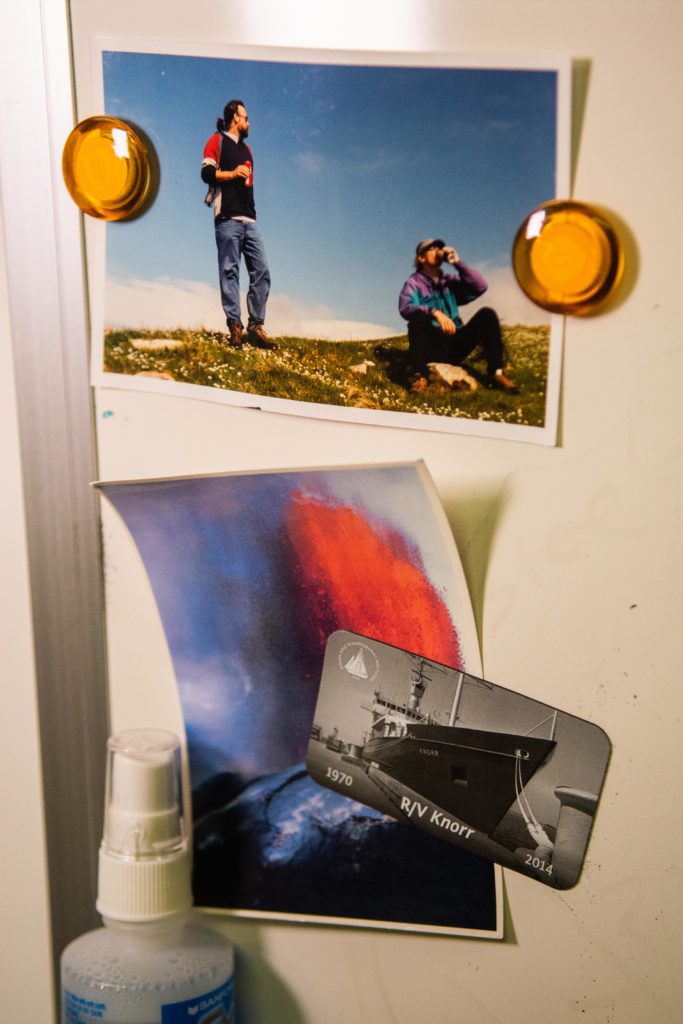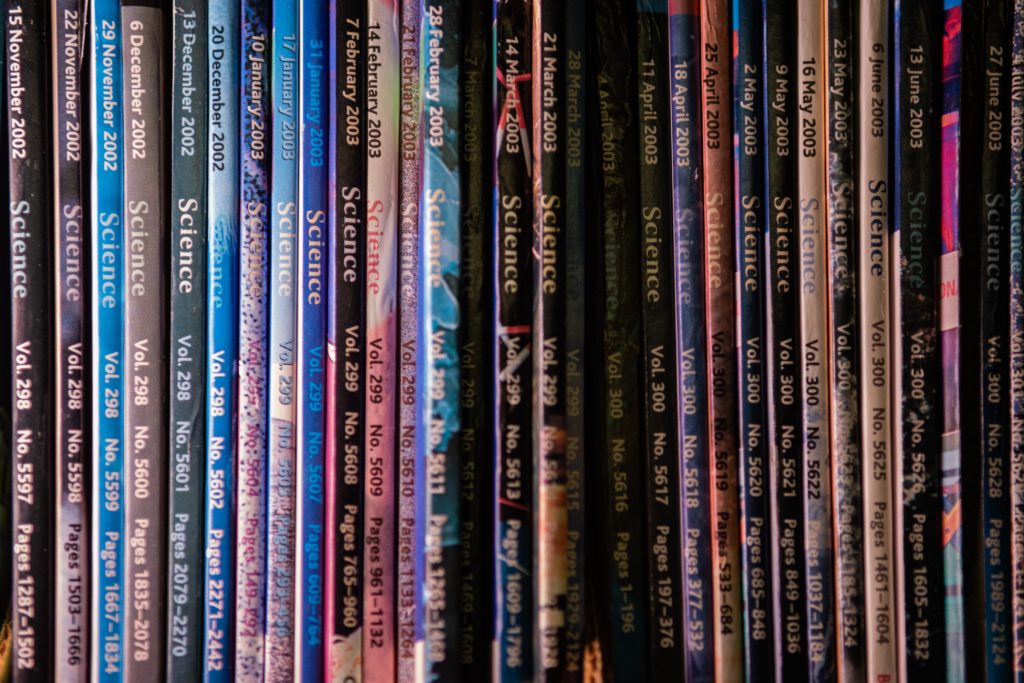At the end of a long hallway in the Geology and Geophysics department at the Woods Hole Oceanographic Institution (WHOI), Alexandra Castillejo pushes her way through large double doors. They swing wide open to reveal a shadowy, cavernous room filled with shelves that reach up into dark heights. Several rows up and Alexandra takes a left, flicking on a light as she pulls a stepladder up to a specific shelf, pulling out a drawer. In the drawer sits a box filled with tiny rocks. That’s what she’s here for.
The rocks have made a long trek to get to this store room. They come from below, beneath the crust, in the mantle where hot magma stirs and circulates. We know that’s where the rock came from, and Alexandra is working on figuring out what happened next.

Photo by Tim Briggs
Studying volcanic behavior
Alexandra is on co-op at WHOI studying how volcanic eruptions form, teasing out the specifics of volcano behavior. How can a volcano behave, you may ask? There’s more nuance to it than the tantrums we see on the news, and a lot of that has to do with the type of magma coming up from the mantle.
“We think of these huge eruptions, and that’s the stereotypical notion, an explosive eruption. That’s the result of a different type of magma than an effusive eruption, which would involve more flowing of magma,” according to Alexandra.
Different kinds of magma change the type of eruption and also lead to different ascent rates, or the speed with which magma rises from the mantle to bursting onto the earth’s surface.
Timing the rise and fall of a volcanic eruption is not an easy feat, considering the mantle starts at many kilometers below the Earth’s surface. Rather than measure an eruption as it happens, Alexandra’s research focuses on clues from past events.
As the magma that forms a brand-new eruption rises up from the hot depths of the mantle, it begins to cool, on its way to becoming rock. Inside the still liquid magma, small crystals form, resulting in a mixture of liquid magma, melt, and shards of rock, crystals.
“When these particular crystals form, at some point in formation… they trap part of the melt inside the crystal… which forms this kind of glassy bubble.”
Like amber preserving prehistoric insects, crystalline lockboxes called blebs squirrel tiny samples of the magma away. “It’s a sample of the magma composition and conditions at a certain time in history,” Alexandra explains. These melt inclusions, as they’re also called, give us little windows into the past, and the researchers can use blebs to learn more about volcano behavior.

Photo by Tim Briggs
Magma becomes lava when it breaks the surface of the Earth. The open air exposes the rock to wind, rain, and dust, all of which aren’t friendly with samples. To avoid the grinding forces of the environment, many of the rocks Alexandra studies come from volcanoes in a desert environment, but it’s not a desert you may have guessed: Antarctica.
Though it has a reputation for some of the harshest weather on the planet, rock samples fare well in Antarctica. First of all, rocks don’t get cold, they’re as solid as they’re ever going to get. Second, Antarctica has very low precipitation.
“One of the principal causes of weathering is chemical weathering, in which water plays a significant role,” says Alexandra.
Low precipitation means very little water gets to these rocks, keeping them in pristine condition. In the area the researchers look at, there are 5 main volcanic edifices, one of which, Mount Erebus, has an open lava lake.
Because these melt inclusions form throughout the entire eruption process, researchers use it as a sort of fossil record, with snapshots giving a time lapse portrait of a rising eruption. The different chemistries of the inclusions show change as the magma rises, which Alexandra and her colleagues think happens on a scale of hours to days.
Finding geology

Photo by Tim Briggs
Alexandra’s previous co-ops paved the way for her to end up at Woods Hole. In her first co-op, she worked at the Massachusetts Clean Energy Center where she managed wind energy projects. Her second co-op took her to Spain, where she worked at the US embassy in Madrid in the Economic Section.
“One of the things that I really missed when I was at the Embassy was science. There was one point when I went to a talk hosted by the Spanish government after COP23. I remember going and there was a scientist that spoke and I thought, ‘I miss science so much.”
After Spain, Alexandra pursued her desire for science on a study abroad to New Zealand. There, she discovered her passion for geology.
“One of my classes in NZ was mineralogy and I loved it. I liked looking down microscopes and looking at rocks, I thought it was the coolest thing ever. I would spend extra time in lab. Lab would be over and I would still be in lab looking down the microscope while all the other kids were gone.”
So, when she found this position at WHOI, she knew it was for her. “I knew I wanted to do science, that was my main goal and my backup was consulting. They interviewed me and I was like this is perfect, when can I start?”
Alex will be working at Woods Hole until December. You can learn more about her co-op on the lab’s website here.

Photo by Tim Briggs

